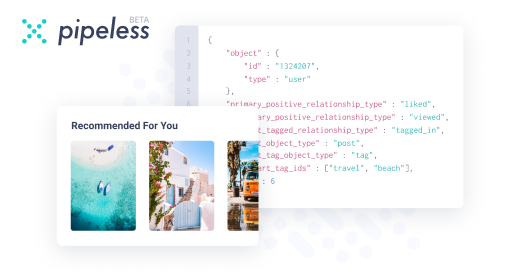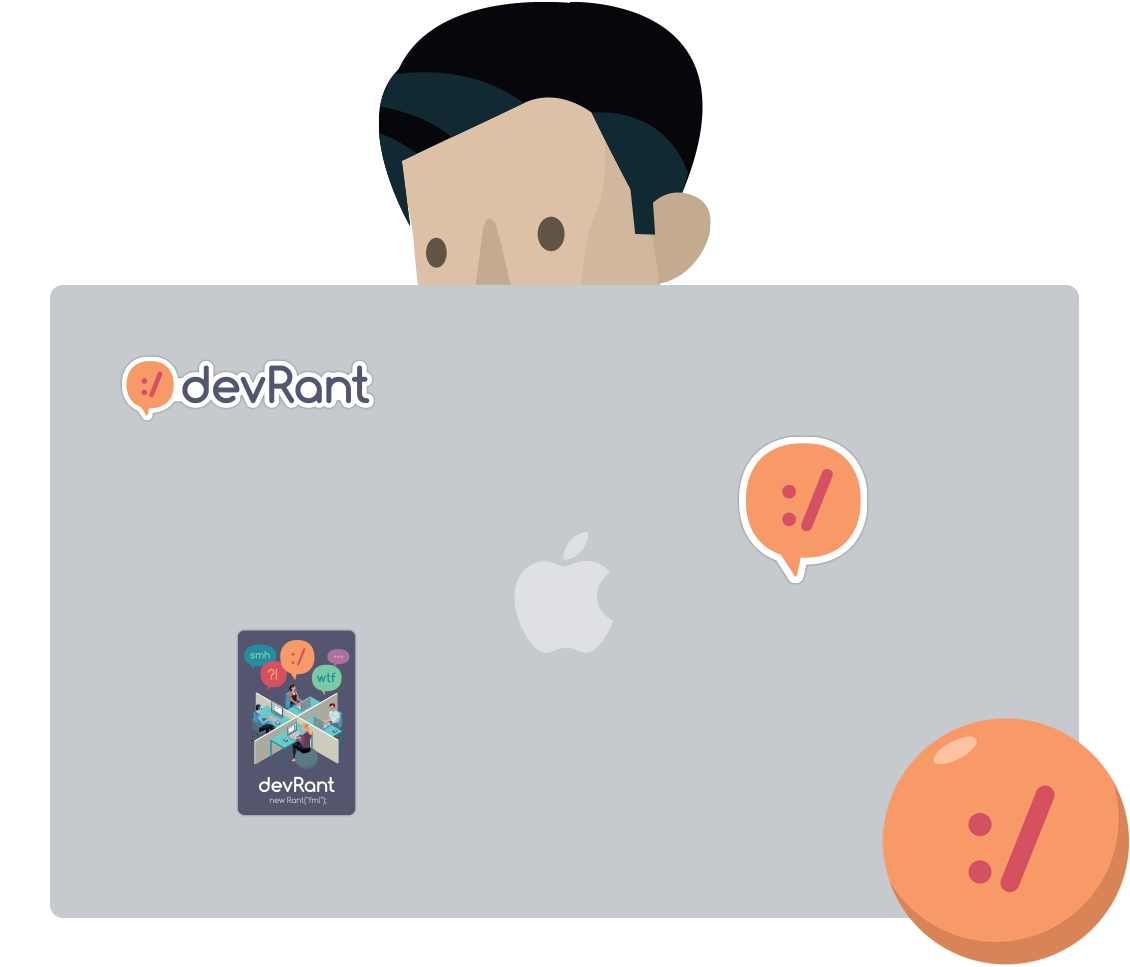Join devRant
Do all the things like
++ or -- rants, post your own rants, comment on others' rants and build your customized dev avatar
Sign Up
Pipeless API

From the creators of devRant, Pipeless lets you power real-time personalized recommendations and activity feeds using a simple API
Learn More
Search - "insert tag"
-
Fuck code.org. Fuck code. Not code code, but "code" (the word "code"). I hate it. At least for teaching. Devs can use it as much as they want, they know what it means and know you can't hack facebook with 10 seconds of furiously typing "code" into a terminal. What the fuck are you thinking when you want me to hack facebook? No, when I program, it's not opening terminal, changing to green text and typing "hack <insert website name here, if none is given, this will result to facebook.com>" Can you just shut the fuck up about how you think that because you can change the font in google fucking docs you have the right to tell me what code can and can't do? No, fuck you. Now to my main point, fuck "code" (the string). It's an overused word, and it's nothing but a buzzword (to non devs, you guys know what you're talking about. how many times have you seen someone think they are a genius when they here the word "code"?) People who don't know shit don't call themselves programmers or devs, they call themselves coders. Why? It fucking sounds cool, and I won't deny that, but the way it's talked about in movies, by people, (fucking) code.org, etc, just makes people too much of a bitch for me to handle. I want everyone reading this rant who has friends who respect the fact that YOU know code (I truly believe everyone on devRant does), how it works, and it's/your limitations, AND that it takes hard work and effort, to thank god right now. If you're stuck with some people like me, I feel you. Never say "code" near them again. Say "program." I really hate people who think they know what an HTML tag is and go around calling themselves coders. Now onto my main point, code.org. FUCK IT. CAN YOU STOP RUINING MY FUCKING AP CS CLASS. NO CODE.ORG, I DON'T NEED TO WATCH YOUR TEN GODDAMN VIDEOS ON HOW TECHNOLOGY IS IMPORTANT, <sarcasm>I'VE BEEN LIVING UNDER A ROCK FOR THIRTY YEARS</sarcasm>. DO I REALLY NEED ANOTHER COPY OF SCRATCH? WAIT, NO, SCRATCH WAS BETTER. YOU HAD FUCKING MICROSOFT, GOOGLE, AND OTHER TECHNOLOGICAL GIANTS AND YOU FUCKED UP SO BAD YOU MADE IT WORSE THAT SCRATCH. JUST LETMECODE (yes I said that) AND STOP TALKING ABOUT HOW SOME IRRELEVANT ROBOT ARM DEVELOPED BY MIT IS USING AI AND MACHINE LEARNING TO MAKE SOME ROBOT EVOLVE?! IF YOU SPEND ONE MORE SECOND SAYING "INNOVATION" I'LL SHOVE THAT PRINT STATEMENT YOU HAVE A SYNTAX ERROR UP YOUR ASS. DON'T GET ME FUCKING STARTED ON HOW ITS IMPOSSIBLE TO DO ANYTHING FOR YOURSELF WHEN YOUR GETTING ALL THE ANSWERS WITHOUT DOING ANY WORK AND THE FACT THAT JAVASCRIPT IS YOUR FUCKING LANGUAGE. <sarcasm>GREAT IDEA, LETS GET THESE NEW PROGRAMMERS INTO A PROFESSIONAL ENVOIRMENT BY ADDING A DRAG AND DROP CODE (obviously we can say it) EDITOR</sarcasm> MAYBE IF YOU GOT THIS SHIT UP YOUR ASS AND TO YOUR BRAIN YOU'D ACTUALLY GET TO PRPGRAMMING IN YOUR ADVANCED AP COURSE. ITS CALLED FUCKING CODE.ORG FOR A REASON32
-
I really don't want to ask for likes... But my life has been getting shittier and shittier. Mental problems. Relationship problems. Coding problems.
A stress ball could really help.1 -
Designer: Let's display all images with <insert obscure Instagram tag>
Me: Search Instagram for images w/ <obscure Instagram tag> [0 results found]
Me: This is fine -
Okay, summary of previous episodes:
1. Worked out a simple syntax to convert markdown into hashes/dictionaries, which is useful for say writing the data in a readable format and then generating a structured representation from it, like say JSON.
2. Added a preprocessor so I could declare and insert variables in the text, and soon enough realized that this was kinda useful for writing code, not just data. I went a little crazy on it and wound up assembling a simple app from this, just a bunch of stuff I wanted to share with friends, all packed into a single output html file so they could just run it from the browser with no setup.
3. I figured I might as well go all the way and turn this into a full-blown RPG for shits and giggles. First step was testing if I could do some simple sprites with SVG to see how far I could realistically get in the graphics department.
Now, the big problem with the last point is that using Inkscape to convert spritesheets into SVG was bit of a trouble, mostly because I am not very good at Inkscape. But I'm just doing very basic pixel art, so my thought process was maybe I can do this myself -- have a small tool handle the spritesheet to SVG conversion. And well... I did just that ;>
# pixel-to-svg:
- Input path-to-image, size.
- grep non-transparent pixels.
- Group pixels into 'islands' when they are horizontally or vertically adjacent.
- For each island, convert each pixel into *four* points because blocks:
· * (px*2+0, py*2+0), (px*2+1, py*2+0), (px*2+1, py*2+1), (px*2+0, py*2+1).
· * Each of the four generated coordinates gets saved to a hash unique to that island, where {coord: index}.
- Now walk that quad-ified output, and for each point, determine whether they are a corner. This is very wordy, but actually quite simple:
· * If a point immediately above (px, py-1) or below (px, py+1) this point doesn't exist in the coord hash, then you know it's either top or bottom side. You can determine whether they are right (px+1, py) or left (px-1, py) the same way.
· * A point is an outer corner if (top || bottom) && (left || right).
· * A point is an inner corner if ! ((top || bottom) && (left || right)) AND there is at least _one_ empty diagonal (TR, TL, BR, BL) adjacent to it, eg: (px+1, py+1) is not in the coord hash.
· * We take note of which direction (top, left, bottom, right) every outer or inner corner has, and every other point is discarded. Yes.
Finally, we connect the corners of each island to make a series of SVG paths:
- Get starting point, remember starting position. Keep the point in the coord hash, we want to check against it.
- Convert (px, py) back to non-quadriplied coords. Remember how I made four points from each pixel?
. * {px = px*0.5 + (px & 1)*0.5} will transform the coords from quadriple back to actual pixel space.
· * We do this for all coordinates we emit to the SVG path.
- We're on the first point of a shape, so emit "M${px} ${py}" or "m${dx} ${dy}", depending on whether absolute or relative positioning would take up less characters.
· * Delta (dx, dy) is just (last_position - point).
- We walk from the starting point towards the next:
· * Each corner has only two possible directions because corners.
· * We always begin with clockwise direction, and invert it if it would make us go backwards.
· * Iter in given direction until you find next corner.
· * Get new point, delete it from the coord hash, then get delta (last_position - new_point).
· * Emit "v${dy}" OR "h${dx}", depending on which direction we moved in.
· * Repeat until we arrive back at the start, at which point you just emit 'Z' to close the shape.
· * If there are still points in the coord hash, then just get the first one and keep going in the __inverse__ direction, else stop.
I'm simplifying here and there for the sake of """brevity""", but hopefully you get the picture: this fills out the `d` (for 'definition') of a <path/>. Been testing this a bit, likely I've missed certain edge cases but it seems to be working alright for the spritesheets I had, so me is happiee.
Elephant: this only works with bitmaps -- my entire idea was just adding cute little icons and calling it a day, but now... well, now I'm actually invested. I can _probably_ support full color, I'm just not sure what would be a somewhat efficient way to go about it... but it *is* possible.
Anyway, here's first output for retoori maybe uuuh mystery svg tag what could it be?? <svg viewBox="0 0 8 8" height="16" width="16"><path d="M0 2h1v-1h2v1h2v-1h2v1h1v3h-1v1h-1v1h-1v1h-2v-1h-1v-1h-1v-1h-1Z" fill="#B01030" stroke="#101010" stroke-width="0.2" paint-order="stroke"/></svg>4

